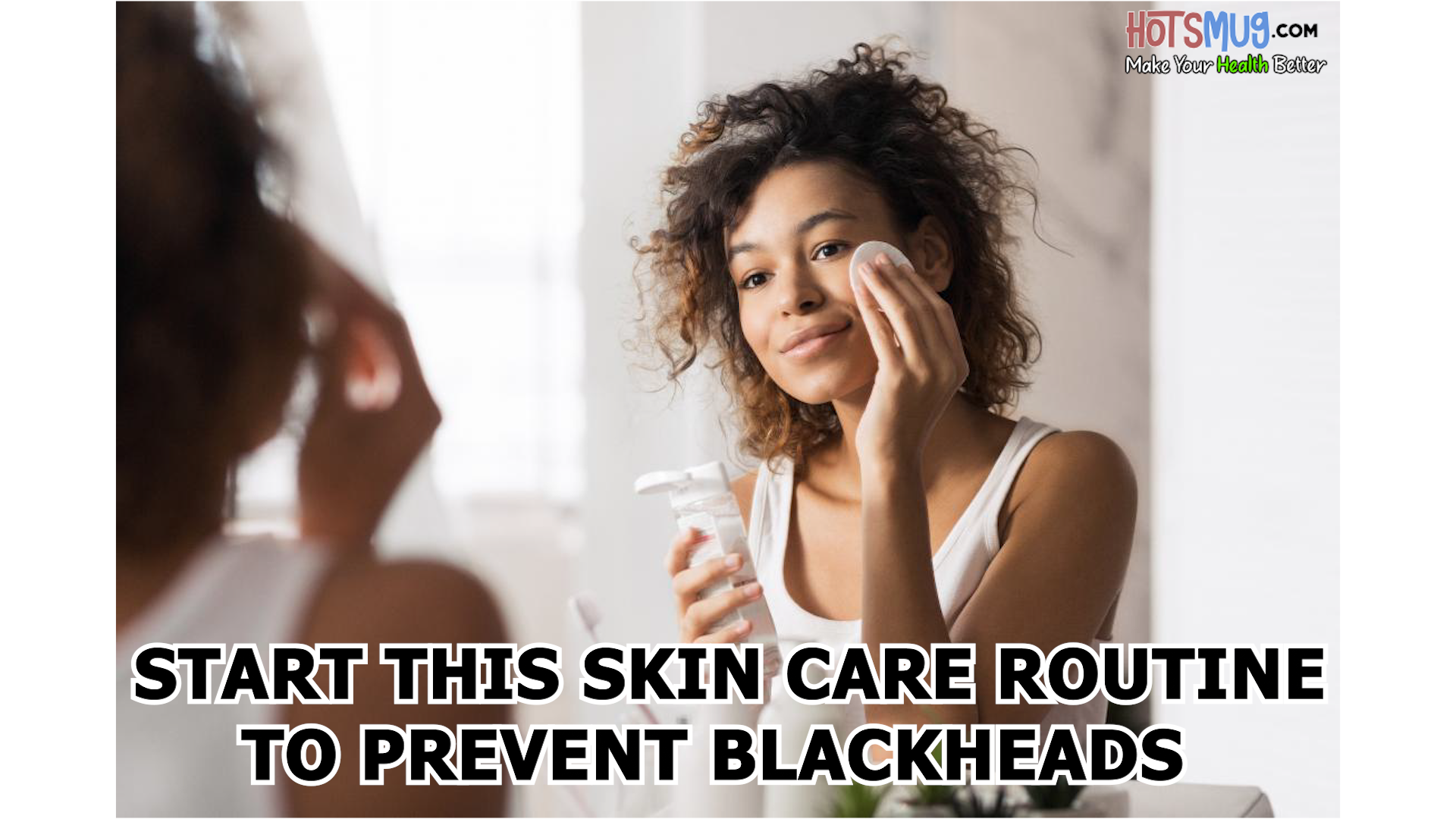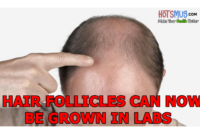Acne can present itself in various forms—from fungal acne that appears as tiny bumps in a cluster, to bacterial acne that shows up as cysts, bumps, nodules, and most commonly as blackheads and whiteheads. Unlike blackheads, whiteheads are closed comedones where the oil and dead cells are harder to remove and they need to be extracted by a dermatologist. But blackheads just never stop coming back. The good thing is that they can be tackled at home with the right active ingredients, and no, we don’t mean nose strips and harsh scrubs.
What are blackheads?
Blackheads are enlarged pores that have a hair follicle and have been clogged with dead skin cells and sebum. It is a part of the acne cycle and when the oil in the pores gets oxidised from air exposure, this open comedone turns black in colour. Dirt and leftover makeup that hasn’t been cleaned off also contribute to blackheads. “Blackheads don’t directly harm your skin, but they do serve as an ideal breeding ground for bacteria and are a potential cause of acne, spots and scars. Another problem with blackheads is that, if they are large and clog your pores for too long, they can cause permanently dilated pores or even ice pick scars,” says celebrity dermatologist Dr Niketa Sonavane, founder, Ambrosia Aesthetics, Mumbai. Warm, humid weather and high levels of pollution mean that your sebaceous glands are often on an overdrive in certain months. You might be tempted to use nose strips regularly, but what you need to tackle is the oil secretion and do daily gentle exfoliation instead of looking for a quick solution that might harm your skin.
“Nose strips are not bad, and they effectively remove surface blackheads but not the deep ones. They don’t treat the cause of blackheads so recurrence is common,” says Dr Chytra V Anand, cosmetic dermatologist, founder, Kosmoderma Clinics and Skin Q. Plus, your skin might get sensitised to the glue on these strips.
Start with washing your face daily
A general skin care routine follows two essential steps: gentle cleansing and moisturizing.
Below are extra steps to add to your routine that can help keep those pesky blackheads away. Some of the steps can be done daily, while others should only be done a few times a week, depending on the sensitivity of your skin.
Salicylic acid
- When: During the cleansing or moisturizing step of your routine.
- How: Apply directly to the skin as part of your cleanser or moisturizer, or apply as a spot treatment for blackheads.
- How often: A few times a week or daily if your skin isn’t dried or irritated by it.
Salicylic acid is a common acne-fighting skin care ingredient. It works by breaking down acne lesions. Many skin care products on the market, including cleaners and moisturizers, contain salicylic acid.
Retinoids
- When: At night. Wait at least 20 to 25 minutes after washing your face before applying.
- How: Apply a pea-sized amount of the retinoid and spread over areas where you’re prone to acne.
- How often: Every night if possible, but if dryness or irritation happens, it can be used every other night or every three nights.
Retinoids are vitamin A derivatives commonly used in “anti-aging” skin care products. However, topical retinoids are also the first-line treatment for treating and preventing blackheads.
Retinoids work by unclogging blocked pores and affecting skin cell growth, which helps to prevent acne formation. Retinoids should be an essential part of your skin regimen.
Topical Differin is available over the counter while more potent retinoids are available by prescription. It may take 3 months to see results.
Be aware that retinoids may increase UV light sensitivityTrusted Source. In one with hairless mice, it increased the risk of skin tumors and squamous cell skin neoplasms when exposed to UV light. Take extra care to protect yourself from the sun when using topical retinoids.
In addition, retinoids should not be used by people who are planning on becoming pregnant or are already pregnant.
Moisturize
- When: In the morning and at night.
- How: Apply a few drops of your moisturizer and massage directly into the skin.
- How often: Daily.
Moisturizing is an essential final step in a daily skin care routine. Depending on what your skin needs, there are many types of moisturizers on the market.
Emollients are moisturizers that are thick and hydrating for dry skin that flakes or peels. Hydrating serums are a great way to rehydrate the skin, especially when left on overnight. For oily skin types, lighter lotions can help make the skin feel less oily.
A good moisturizer will help to calm the skin and restore the protective skin barrier, which promotes healthy skin.
Avoid comedogenic products
Comedogenic products can lead to clogged pores, which can cause an increase in acne spots such as blackheads. If you’re trying to prevent blackheads from returning, use noncomedogenic, oil-free products in your skin care routine.
Look for cleansers and moisturizer products that are lightweight and gentle on the skin. Heavy, skin-irritating products can make you more prone to acne spots.
Face mask
Face masks are not needed or especially useful for preventing blackheads. But if you enjoy them, here’s how to include them in your routine.
- When: Right after the exfoliation step of your routine.
- How: Follow the product instructions to apply your mask and leave on for 10 to 15 minutes before rinsing.
- How often: 1 to 2 times per week.
Face masks are touted anecdotally to have many different benefits in a skin care routine, from cleansing to exfoliating to moisturizing. Some masks are designed to be applied and left on the skin, while others come in the form of a “mask” that can be draped over your face.
Both charcoal and clay masks are said to work to prevent the formation of blackheads by pulling oil and other impurities out of your pores. However, these types of masks can dry out your skin. At most, you should use them only a few times per week.
Keep in mind that the evidence supporting the use of these face masks for any kind of acne is anecdotal. It’s also possible that you may break out worse from using some of these masks or develop a rash, so take precaution.
The routine
Here’s a sample weekly routine that’s also great for sensitive skin. It keeps gentle cleansing and moisturizing at its base.
Day 1
- gentle cleanser and moisturizer with SPF in the morning
- oil-free moisturizer as needed during the day
- gentle cleanser at night
- retinoid at night
Day 2
- gentle cleanser and moisturizer with SPF in the morning
- re-moisturize as needed during the day
- cleanser with 4% benzoyl peroxide or 4% salicylic acid at night
- skin serum at night
Day 3
- gentle cleanser and moisturizer with SPF in the morning
- re-moisturize as needed during the day
- gentle cleanser at night
- retinoid at night
Day 4
- gentle cleanser and moisturizer with SPF in the morning
- re-moisturize as needed during the day
- cleanser with 4% benzoyl peroxide or4% salicylic acid at night
- skin serum at night
Day 5
- gentle cleanser and moisturizer with SPF in the morning
- re-moisturize as needed during the day
- gentle cleanser at night
- retinoid at night
Day 6
- gentle cleanser and moisturizer with SPF in the morning
- re-moisturize as needed during the day
- cleanser with 4% benzoyl peroxide or4% salicylic acid at night
- skin serum at night
Day 7
- gentle cleanser and moisturizer with SPF in the morning
- re-moisturize as needed during the day
- gentle cleanser at night
- retinoid at night




